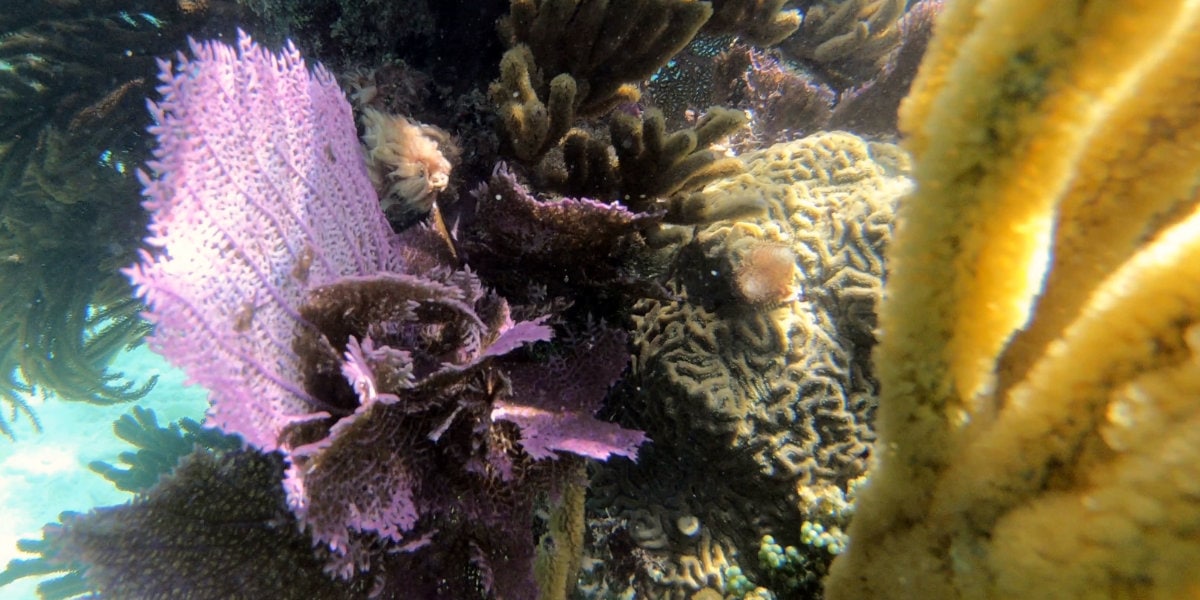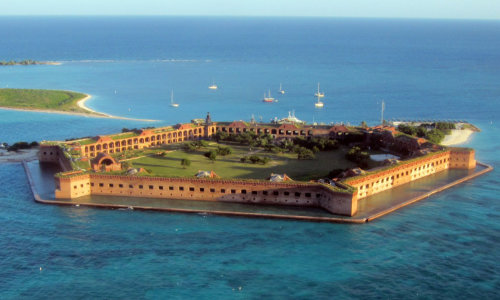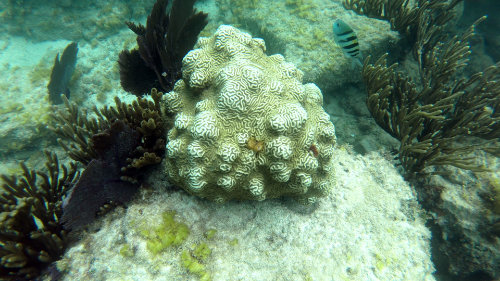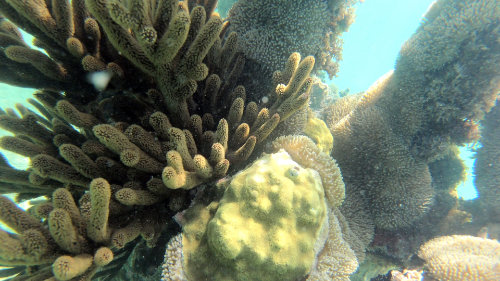Day trip to Fort Jefferson
Authored by: Rick Greenfield, President, CaribSea, Inc.

Even though it never fired a shot in anger, Fort Jefferson is a wealth of living history above and below the water. Located about 70 miles west of Key West lies America's largest existing brick structure. When approaching it from the water, it first appears as a dark streak on the horizon. Coming closer, Fort Jefferson strikes you as incongruent to the setting, dull red and huge, looming over shimmering turquoise water. The white sandy beaches that seem more suited to a tiki bar than a somber military structure. When you see the millions of bricks floated in by sail and steam and at a huge cost, you immediately ask yourself "why here." The answer turns out to be simple and compelling. Fort Jefferson was meant to protect the lucrative sea lanes in and out of the Gulf of Mexico and the Louisiana Purchase from European powers, particularly England. England contested the ownership of, what was then, half of the United States, and though the Battle of New Orleans settled the matter in the near term, it was a nagging concern for the young United States throughout most of the nineteenth century.

The mostly completed fort was occupied by the North in the first days of the Civil War as was nearby Key West. It was strengthened with cannons but never faced a credible threat due to the strength of the Union's blue water Navy. The Civil war era cannons were obsolete by the end of the conflict and thereby abandoned in the place where they are now some of the best examples of early Civil War-era cannons in existence today. Modern rifled cannon shells made the fort obsolete as a protective measure but the isolation made it ideal for a high-security prison. Its most famous inmate was Dr. Mudd, the physician who set the broken leg of John Wilkes Booth after the assassination of President Lincoln.

The fort eventually settled into disuse apart from the lighthouse which protected ships from the dangerous coral reefs. Nowadays, the remoteness of Fort Jefferson with its strict visitor management policies, and ongoing mitigation efforts, seems to have somewhat protected the corals from the ravages of disease and overuse that afflicted many of Florida's other reefs. Here it is still possible to see large healthy coral "heads" and abundant queen conch populations both of which nearly disappeared over the rest of Florida some 30 years ago. There are two regions adjacent to the fort known as the coal dock ruins and they are my favorite snorkeling places. You can access them from a sandy beach and a leisurely paddle brings you to them and a wealth of marine life. The summer is the season most likely to give you clear, warm water but the climate is HOT and there is little shade! If you are heat sensitive in any manner, the winter months are better.

Fort Jefferson is accessible from Key West by a daily National Park Service ferry named the Yankee Freedom but must be booked well in advance due to high demand and limited access to the site. It is a comfortable 3-hour ride to the fort on this swift 110-foot-long catamaran. Riding on the bow I have personally observed, porpoises, hammerhead sharks, sea turtles, innumerable flying fish, and other magnificent creatures. You are allowed 3 hours at the site and that goes faster than you would think. My advice is to go snorkeling first and then walk the fort. The fort tours will take a good portion of the time allowed which you may regret on a good clear-water day.
To see more photos of this location and links to how CaribSea products provide the natural environment in your aquarium, visit CaribSea.com,Click Here!
Article List





